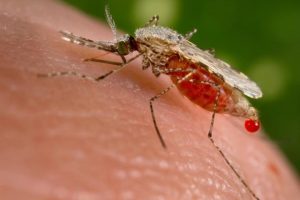- Home
- Editorial
- News
- Practice Guidelines
- Anesthesiology Guidelines
- Cancer Guidelines
- Cardiac Sciences Guidelines
- Critical Care Guidelines
- Dentistry Guidelines
- Dermatology Guidelines
- Diabetes and Endo Guidelines
- Diagnostics Guidelines
- ENT Guidelines
- Featured Practice Guidelines
- Gastroenterology Guidelines
- Geriatrics Guidelines
- Medicine Guidelines
- Nephrology Guidelines
- Neurosciences Guidelines
- Obs and Gynae Guidelines
- Ophthalmology Guidelines
- Orthopaedics Guidelines
- Paediatrics Guidelines
- Psychiatry Guidelines
- Pulmonology Guidelines
- Radiology Guidelines
- Surgery Guidelines
- Urology Guidelines
Delhi scientists decode how malaria parasites multiply

For the first time, scientists have found how malaria parasites multiply rapidly, an advance that may help develop new drugs to combat the deadly disease that affects millions of people globally.
Malaria parasites are transmitted to people through the bites of infected female Anopheles mosquitoes, which infuse the parasite called Plasmodium into humans.
Until now, the mechanism and sites from where DNA replication is initiated, as well as the proteins involved in the process, have been a grey area for scientists.
"During each cycle of multiplication, the genome of the parasite is duplicated through DNA replication. This process of replication begins from some specific sites along the genome, known as origin of replication (OriC)," said Suman Kumar Dhar, Professor at the Special Centre for Molecular Medicine, Jawaharlal Nehru University (JNU) in New Delhi.
"Bacterial genomes usually have only one OriC in their genome, but higher organisms such as humans can have multiple such origin sites. Identifying these origin sites in a given genome is a very difficult task," Dhar told PTI.
In a six-year-long study using computational tools and experimental validation, researchers including Assistant Professor Kushal Shah from the Department of Electrical Engineering, Indian Institute of Technology (IIT) Delhi, found that the parasites replicate from multiple sites in the genome which have similar signature motifs found in yeast.
"The frequency of occurrence of these motifs as potential origins in parasite genome is more than that in higher organism genomes, which means that the parasites will multiply very fast at a given time," Dhar said.
The proteins that are involved in this process have also been found, he added.
It can be understood that by inhibiting the function of these proteins and their binding to these replication sites, parasite growth can be stopped.
"Understanding the process of multiplication will lead to finding new drug targets to combat the disease which is burdened by resistance against conventional drugs including the wonder drug Artemisinin, the discovery of which fetched the Nobel prize last year," Dhar said.
The research team also included Assistant professor Annangarachari Krishnamachari, and research students Meetu Agarwal and Kishanu Bhowmick from JNU.
Malaria remains endemic in India with approximately 14 per cent of the population, or 184 million people, at high risk of malaria transmission, according to a World Health Organization (WHO) report.
About 70 per cent of malaria cases reported from the South East Asia Region (SEAR) are from India, where the number of cases and deaths due to the vector-borne disease in 2014 saw an increase as compared to 2012.
In 2015, the global tally of malaria reached 429,000 malaria deaths and 212 million new cases. One child died from malaria every 2 minutes, according to a WHO report.
female Anopheles mosquitoesJawaharlal Nehru UniversityKishanu BhowmickMalariaMeetu AgarwalMolecular Medicinenew drugsSuman Kumar DharWHOWorld Health Organization
Source : PTINext Story
NO DATA FOUND

Disclaimer: This site is primarily intended for healthcare professionals. Any content/information on this website does not replace the advice of medical and/or health professionals and should not be construed as medical/diagnostic advice/endorsement or prescription. Use of this site is subject to our terms of use, privacy policy, advertisement policy. © 2020 Minerva Medical Treatment Pvt Ltd